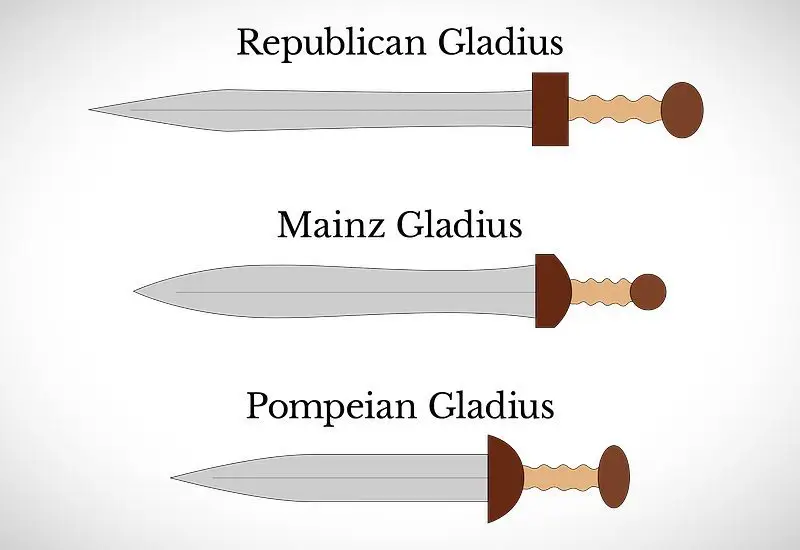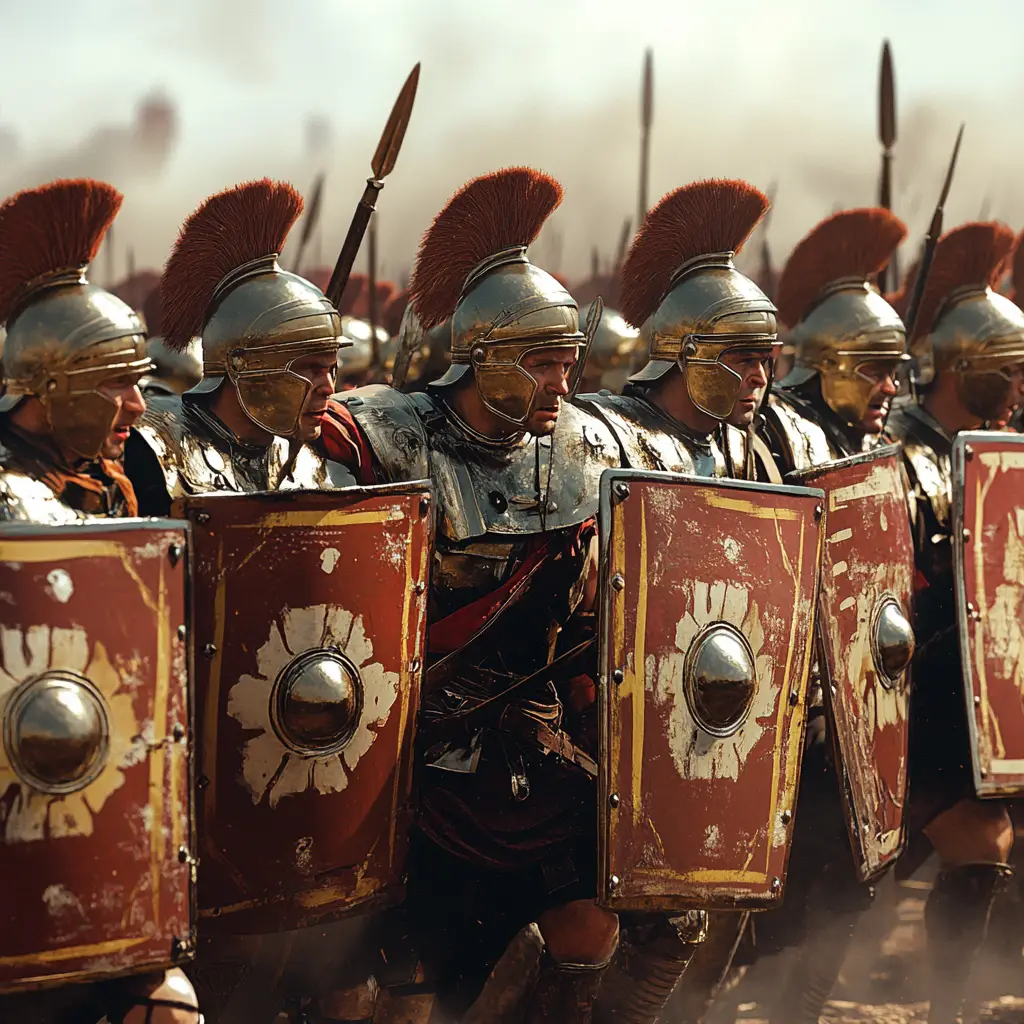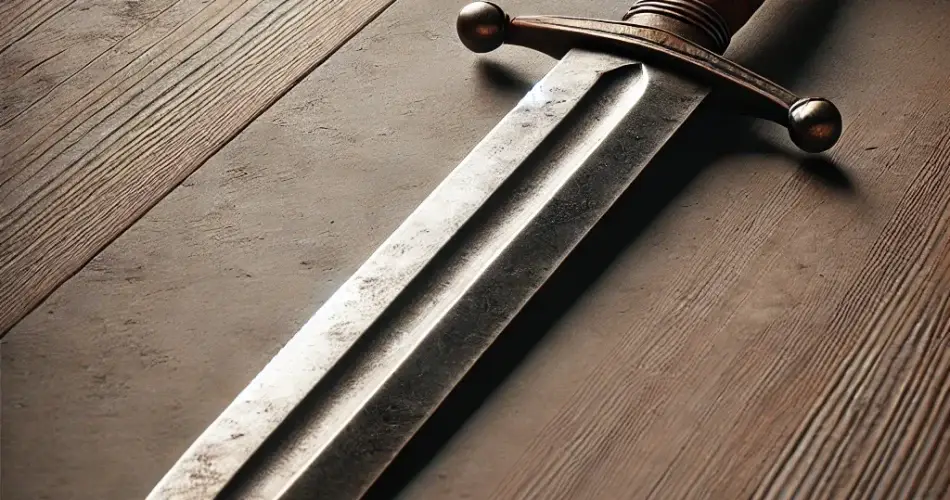The Roman gladius, a short sword that became synonymous with the might of the Roman legions, is one of the most iconic weapons of ancient history. Compact yet deadly, the gladius played a crucial role in Rome’s military conquests, contributing significantly to the expansion and maintenance of the Roman Empire.
Origins of the Gladius
The gladius was not originally a Roman invention. It traces its roots to the Iberian Peninsula, where the Romans encountered the sword during their campaigns against the Celtiberians in the 3rd century BCE.
The Iberians used a weapon known as the “gladius hispaniensis,” which impressed the Romans with its effectiveness in close combat. Recognizing its potential, the Romans adopted and refined the design to suit their military needs, leading to Roman soldiers’ widespread use of the gladius.
Design and Features
The Roman gladius is characterized by its short length, typically measuring between 18 to 24 inches (45 to 60 cm). Unlike most ancient swords, the gladius was designed for thrusting rather than slashing. The sword featured a double-edged blade with a pronounced taper, ending in a sharp point that could penetrate enemy armour and shields.
The hilt of the gladius was usually made of wood, bone, or ivory, with a guard that protected the wielder’s hand during combat. The pommel was often rounded, providing balance and allowing for a secure grip. The gladius was lightweight, weighing around 2.2 pounds (1 kg), making it easy to wield and manoeuvre in battle.
Variants of the Gladius

Over time, the gladius underwent several modifications, resulting in different variants that were used throughout the Roman Empire’s history. The main variants of the gladius include:
Republican Gladius
The earliest form of the gladius, this variant was longer and narrower, with a blade length of up to 27 inches (68 cm). It was highly effective in both thrusting and cutting, making it a versatile weapon for the Roman infantry.
Mainz Gladius
Named after the Roman city of Mainz in Germany, this variant featured a shorter and broader blade with a more pronounced taper. It was specifically designed for thrusting, which became the primary combat technique of the Roman legions.
Fulham Gladius
A transitional form between the Mainz and Pompeii types, the Fulham Gladius had a shorter blade and a sharper point, further enhancing its thrusting capabilities.
Pompeii Gladius
The most common and standardized version, the Pompeii Gladius, had a shorter, straighter blade with parallel edges. It was designed for close-quarters combat, where quick, precise thrusts were essential.
The Gladius in Combat

The Roman gladius complemented the Roman military doctrine of close-formation fighting. It was essentially a stabbing weapon, and the Roman legionaries, equipped with a gladius, shield (scutum), and armour, were trained to fight in tight formations known as maniples or cohorts. In battle, soldiers would lock their shields together to form a protective wall, thrusting their gladii through gaps in the shield wall to strike at the enemy in the belly, groin or feet.
This technique allowed the Roman legions to maintain a formidable defensive position while inflicting significant damage on their opponents. The short length of the gladius made it ideal for fighting in these confined spaces, where longer weapons would be cumbersome and less effective. The gladius’s design ensured that Roman soldiers could deliver quick, lethal strikes with minimal exposure to counterattacks.
The Gladius as a Symbol of Roman Power
Beyond its practical use in combat, the gladius became a powerful symbol of Roman military dominance. It represented the discipline, efficiency, and professionalism of the Roman legions, who were the backbone of the empire’s expansion. The phrase “Roman gladius” evokes images of the disciplined ranks of legionaries, their swords flashing in the sun as they marched to conquer new territories.
The gladius also became a symbol of the Roman soldier’s status. Upon completion of training, a legionary was issued a gladius as part of his standard equipment, marking his full induction into the Roman military. The sword was not just a tool of war but a badge of honor, representing the soldier’s commitment to Rome and its ideals.
Legacy of the Gladius
The Roman gladius remained in use for several centuries, evolving alongside the Roman army and its changing tactics. However, by the late Roman period, the gladius was gradually replaced by the spatha, a longer sword that became more suitable for the cavalry-focused tactics of the later Roman Empire.
The Influence of the gladius can be seen in the design of later medieval European swords, especially the longsword. It remains a popular subject of study among historians, archaeologists, and military enthusiasts till today.
The gladius continues to captivate the imagination as a symbol of Rome’s military genius and the empire’s enduring impact on the world.
